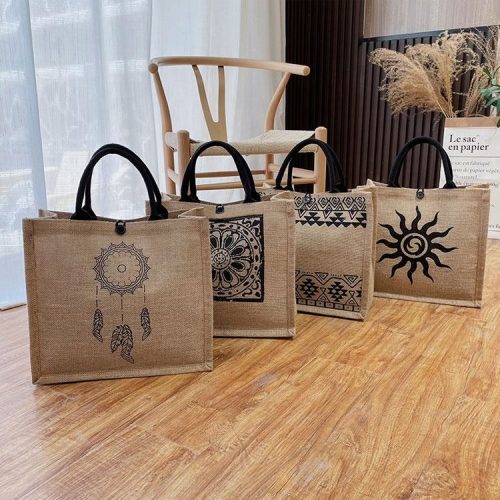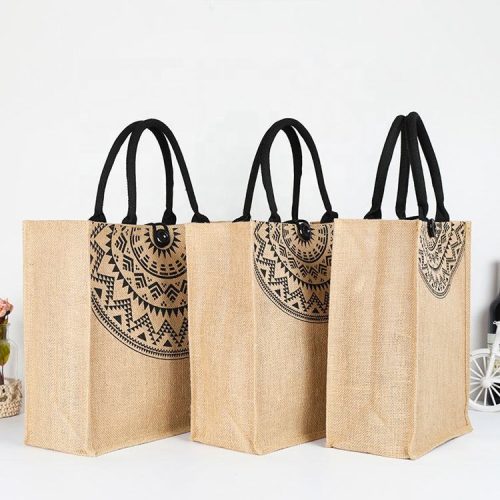The world of fashion is not just about aesthetics; it’s also about stories, journeys, and connections. The journey of jute fiber, from humble farms to fashionable accessories, is a testament to the intricate relationship between nature, craftsmanship, and conscious consumerism. Join us as we explore the captivating journey of jute fiber in crafting eco-friendly bags.
1. Rooted in Nature: The journey begins in the fertile fields where jute plants thrive. Jute, a sustainable and renewable plant fiber, is cultivated in regions with favorable climates. Its growth requires minimal chemical intervention, making it an environmentally friendly choice right from the start.
2. Harvesting and Retting: When the jute plants reach maturity, the next step is harvesting. Once harvested, the plants undergo a process known as retting, where they are soaked in water to soften the fibers and separate them from the woody core. This traditional method ensures that the fibers are extracted without the need for excessive energy or synthetic chemicals.
3. Fiber Extraction: After retting, the jute fibers are extracted from the plants. These fibers are long, soft, and versatile, making them ideal for various applications, including textile production. The process of extracting jute fibers preserves their natural texture and strength, contributing to the durability of the end product.
4. Spinning and Weaving: The extracted jute fibers are then spun into threads, ready to be woven into fabric. Skilled artisans transform these threads into a canvas that tells the story of sustainable craftsmanship. This weaving process respects the fibers’ natural properties, resulting in a unique texture that distinguishes jute bags from their synthetic counterparts.
5. Design and Creation: The woven jute fabric is the canvas upon which designers unleash their creativity. From tote bags to backpacks and clutches, jute bags come in various shapes and sizes, catering to diverse fashion preferences. Embellishments, prints, and colors are added to the bags, enhancing their visual appeal and complementing the natural aesthetic of jute.
6. Ethical Production: The journey of jute fiber doesn’t just end with the creation of the bags. The process often involves ethical practices that prioritize fair labor conditions and sustainable livelihoods for the communities involved. Choosing jute bags means supporting a supply chain that values both people and the planet.
7. Eco-Friendly Accessory: The final destination of this journey is a stylish and eco-friendly accessory that resonates with consumers who prioritize sustainability. Jute bags stand as a symbol of responsible fashion, allowing individuals to express their style while making a positive impact on the environment.
8. Circular Potential: Even when their life as bags comes to an end, jute products continue to contribute to sustainability. Jute’s biodegradability ensures that these bags return to the earth, completing a natural cycle without leaving a lasting environmental footprint.
In conclusion, the journey of jute fiber from farm to fashion encapsulates a narrative of sustainability, craftsmanship, and conscious consumer choices. From the fields where jute plants grow to the hands of skilled artisans and the shoulders of fashion-conscious individuals, jute bags bridge the gap between nature and style. By embracing jute bags, we not only carry an accessory but also carry the story of an eco-friendly revolution that has the power to transform the way we view fashion and our impact on the planet.


